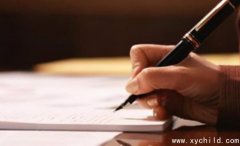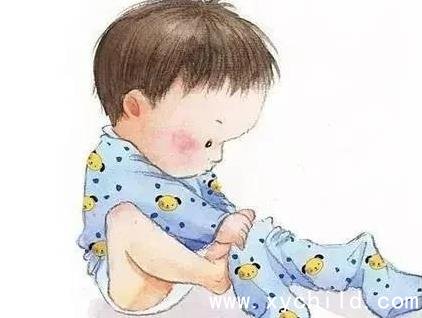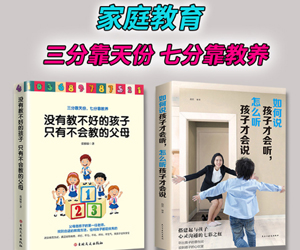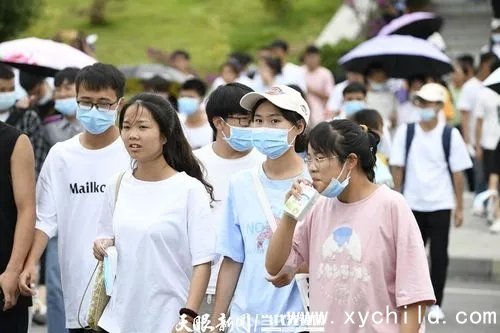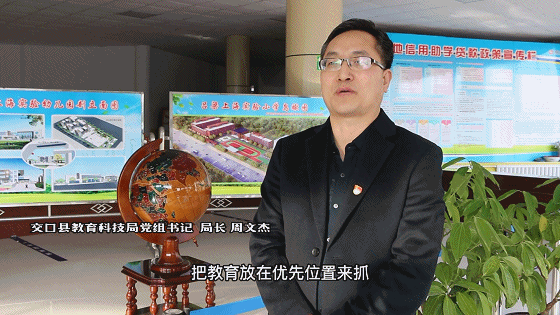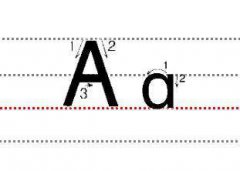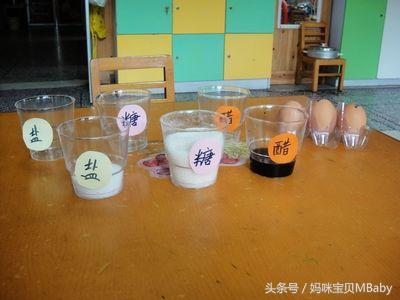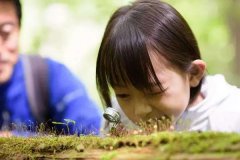人民网安阳2月17日电(记者 刘伟)2月17日,由中央网信办网络传播局指导的“写意汉语——探寻汉字本源”网络主题宣传活动正式启动.
文字是历史文明传承的重要载体。 第一站,跟随记者走进位于甲骨文发源地河南安阳的文字“故乡”——中国文字博物馆。 在这个汉字文化科普馆,让我们一起探寻汉字的起源,感受汉字的独特魅力,了解字里行间的文化内涵。
中国文字博物馆包括文字广场、甲骨林主题广场、主馆“玄文阁”、东馆“会文阁”、西馆“博文阁”。 东西亭与主亭环抱,俯视效果似“和”字,体现了中华民族“天人合一”的传统文化理念。
走进充满殷商风韵的后现代主义建筑群,首先映入眼帘的是矗立在馆前的高大书法广场,这也是汉字博物馆的标志。 据悉,它取甲骨文、金文中的“字”字形,饰有典型的殷商青铜器纹饰,如饕餮纹、凤鸟纹等。 而穿过人物广场,走在通往大殿的大道上,还可以看到两侧的甲骨碑林,由28块青铜甲骨片组成。
汉字博物馆展厅《汉字发展史》基本展、《甲骨惊世》特展、《汉字民俗》特展、特展《紫书琼林》、《书园英华》特展九个部分、“文字与宇宙”特展、互动影音厅、特展共同构建了系统完整的汉字与文化展示体系.
其中,基本展《汉字发展史》分为5个展厅、14个单元。 贾湖遗址出土的原始刻画符号、甲骨文、金文、竹帛、篆书、隶书、楷书……这部分展览全面展示了汉字的起源、发展和演变详细的资料和丰富的文本载体。 展示了中华民族的品格、灿烂的文化和灿烂的文明。 据中国文字博物馆解说员冯玉霄介绍,目前,殷墟出土的骨片约有15万块,异字总数约4500至5000个。
特展部分以汉字为媒介,着重展示汉字的应用体验。 走进“汇文馆”,一楼东厅“汉字民俗”专题展厅陈列着与汉字密切相关的瓦片、对联、对联、灯谜、剪纸等汉字民俗风情。大家的生产生活; 一楼和二楼共有三个展厅。 展览分为九个单元,通过形意释义,用生动的手法用一些汉字讲述故事。
此外,多个展厅还设置了互动区。 记者亲身体验了猜字谜、数字汉字等多种互动游戏。
人民网安阳2月17日电(记者 刘伟)2月17日,由中央网信办网络传播局指导的“写意汉语——探寻汉字本源”网络主题宣传活动正式启动.
文字是历史文明传承的重要载体。 第一站,跟随记者走进位于甲骨文发源地河南安阳的文字“故乡”——中国文字博物馆。 在这个汉字文化科普馆,让我们一起探寻汉字的起源,感受汉字的独特魅力,了解字里行间的文化内涵。
中国文字博物馆包括文字广场、甲骨林主题广场、主馆“玄文阁”、东馆“会文阁”、西馆“博文阁”。 东西亭与主亭环抱,俯视效果似“和”字,体现了中华民族“天人合一”的传统文化理念。
走进充满殷商风韵的后现代主义建筑群,首先映入眼帘的是矗立在馆前的高大书法广场,这也是汉字博物馆的标志。 据悉,它取甲骨文、金文中的“字”字形,饰有典型的殷商青铜器纹饰,如饕餮纹、凤鸟纹等。 而穿过人物广场,走在通往大殿的大道上,还可以看到两侧的甲骨碑林,由28块青铜甲骨片组成。
汉字博物馆展厅《汉字发展史》基本展、《甲骨惊世》特展、《汉字民俗》特展、特展《紫书琼林》、《书园英华》特展九个部分、“文字与宇宙”特展、互动影音厅、特展共同构建了系统完整的汉字与文化展示体系.
其中,基本展《汉字发展史》分为5个展厅、14个单元。 贾湖遗址出土的原始刻画符号、甲骨文、金文、竹帛、篆书、隶书、楷书……这部分展览全面展示了汉字的起源、发展和演变详细的资料和丰富的文本载体。 展示了中华民族的品格、灿烂的文化和灿烂的文明。 据中国文字博物馆解说员冯玉霄介绍,目前,殷墟出土的骨片约有15万块,异字总数约4500至5000个。
特展部分以汉字为媒介,着重展示汉字的应用体验。 走进“汇文馆”,一楼东厅“汉字民俗”专题展厅陈列着与汉字密切相关的瓦片、对联、对联、灯谜、剪纸等汉字民俗风情。大家的生产生活; 一楼和二楼共有三个展厅。 展览分为九个单元,通过形意释义,用生动的手法用一些汉字讲述故事。
此外,多个展厅还设置了互动区。 记者亲身体验了猜字谜、数字汉字等多种互动游戏。
人民网安阳2月17日电(记者 刘伟)2月17日,由中央网信办网络传播局指导的“写意汉语——探寻汉字本源”网络主题宣传活动正式启动.
文字是历史文明传承的重要载体。 第一站,跟随记者走进位于甲骨文发源地河南安阳的文字“故乡”——中国文字博物馆。 在这个汉字文化科普馆,让我们一起探寻汉字的起源,感受汉字的独特魅力,了解字里行间的文化内涵。
中国文字博物馆包括文字广场、甲骨林主题广场、主馆“玄文阁”、东馆“会文阁”、西馆“博文阁”。 东西亭与主亭环抱,俯视效果似“和”字,体现了中华民族“天人合一”的传统文化理念。
走进充满殷商风韵的后现代主义建筑群,首先映入眼帘的是矗立在馆前的高大书法广场,这也是汉字博物馆的标志。 据悉,它取甲骨文、金文中的“字”字形,饰有典型的殷商青铜器纹饰,如饕餮纹、凤鸟纹等。 而穿过人物广场,走在通往大殿的大道上,还可以看到两侧的甲骨碑林,由28块青铜甲骨片组成。
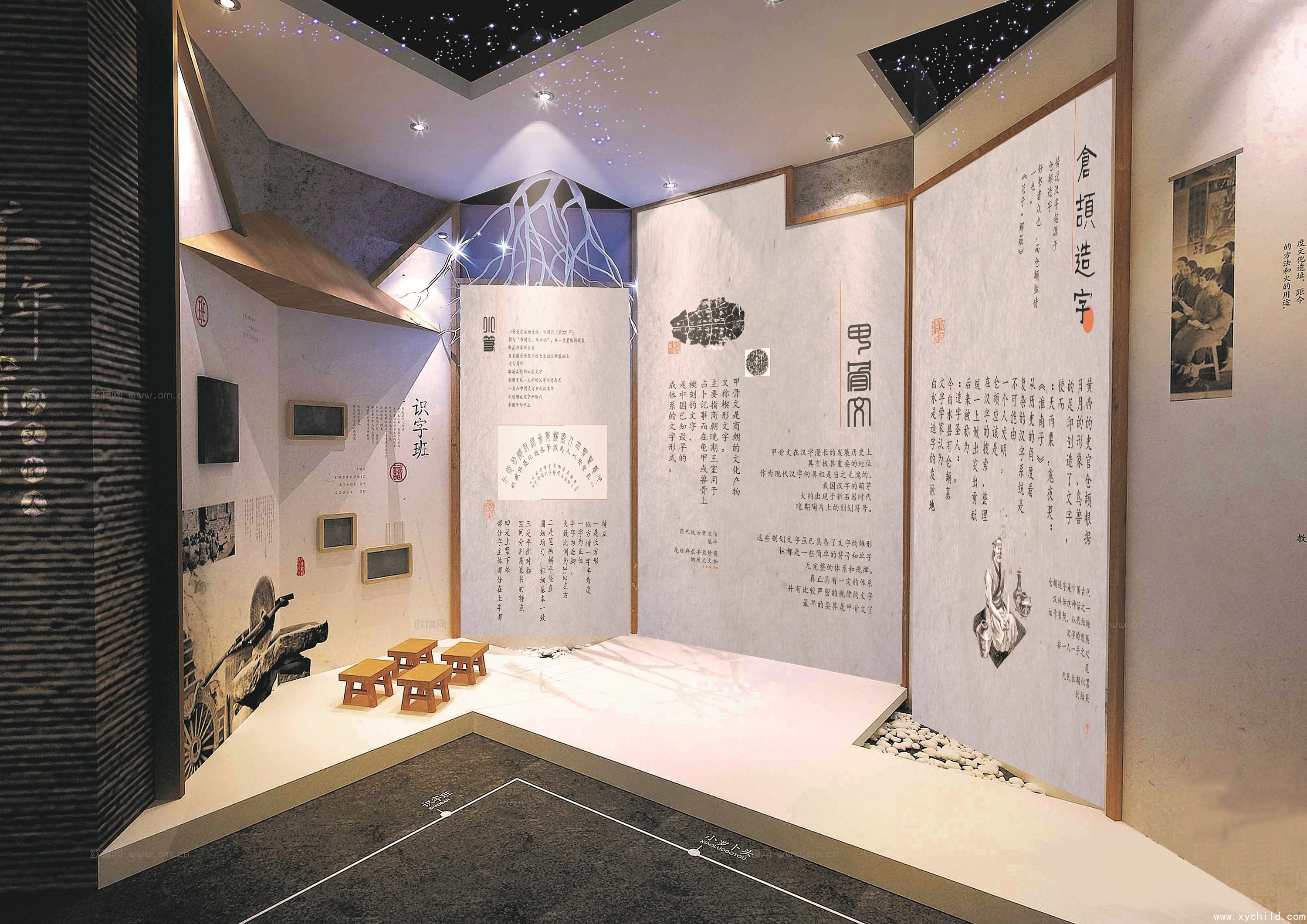
汉字博物馆展厅《汉字发展史》基本展、《甲骨惊世》特展、《汉字民俗》特展、特展《紫书琼林》、《书园英华》特展九个部分、“文字与宇宙”特展、互动影音厅、特展共同构建了系统完整的汉字与文化展示体系.
其中,基本展《汉字发展史》分为5个展厅、14个单元。 贾湖遗址出土的原始刻画符号、甲骨文、金文、竹帛、篆书、隶书、楷书……这部分展览全面展示了汉字的起源、发展和演变详细的资料和丰富的文本载体。 展示了中华民族的品格、灿烂的文化和灿烂的文明。 据中国文字博物馆解说员冯玉霄介绍,目前,殷墟出土的骨片约有15万块,异字总数约4500至5000个。
特展部分以汉字为媒介,着重展示汉字的应用体验。 走进“汇文馆”,一楼东厅“汉字民俗”专题展厅陈列着与汉字密切相关的瓦片、对联、对联、灯谜、剪纸等汉字民俗风情。大家的生产生活; 一楼和二楼共有三个展厅。 展览分为九个单元,通过形意释义,用生动的手法用一些汉字讲述故事。
此外,多个展厅还设置了互动区。 记者亲身体验了猜字谜、数字汉字等多种互动游戏。
人民网安阳2月17日电(记者 刘伟)2月17日,由中央网信办网络传播局指导的“写意汉语——探寻汉字本源”网络主题宣传活动正式启动.
文字是历史文明传承的重要载体。 第一站,跟随记者走进位于甲骨文发源地河南安阳的文字“故乡”——中国文字博物馆。 在这个汉字文化科普馆,让我们一起探寻汉字的起源,感受汉字的独特魅力,了解字里行间的文化内涵。
中国文字博物馆包括文字广场、甲骨林主题广场、主馆“玄文阁”、东馆“会文阁”、西馆“博文阁”。 东西亭与主亭环抱,俯视效果似“和”字,体现了中华民族“天人合一”的传统文化理念。
走进充满殷商风韵的后现代主义建筑群,首先映入眼帘的是矗立在馆前的高大书法广场,这也是汉字博物馆的标志。 据悉,它取甲骨文、金文中的“字”字形,饰有典型的殷商青铜器纹饰,如饕餮纹、凤鸟纹等。 而穿过人物广场,走在通往大殿的大道上,还可以看到两侧的甲骨碑林,由28块青铜甲骨片组成。
汉字博物馆展厅《汉字发展史》基本展、《甲骨惊世》特展、《汉字民俗》特展、特展《紫书琼林》、《书园英华》特展九个部分、“文字与宇宙”特展、互动影音厅、特展共同构建了系统完整的汉字与文化展示体系.
其中,基本展《汉字发展史》分为5个展厅、14个单元。 贾湖遗址出土的原始刻画符号、甲骨文、金文、竹帛、篆书、隶书、楷书……这部分展览全面展示了汉字的起源、发展和演变详细的资料和丰富的文本载体。 展示了中华民族的品格、灿烂的文化和灿烂的文明。 据中国文字博物馆解说员冯玉霄介绍,目前,殷墟出土的骨片约有15万块,异字总数约4500至5000个。
特展部分以汉字为媒介,着重展示汉字的应用体验。 走进“汇文馆”,一楼东厅“汉字民俗”专题展厅陈列着与汉字密切相关的瓦片、对联、对联、灯谜、剪纸等汉字民俗风情。大家的生产生活; 一楼和二楼共有三个展厅。 展览分为九个单元,通过形意释义,用生动的手法用一些汉字讲述故事。
此外,多个展厅还设置了互动区。 记者亲身体验了猜字谜、数字汉字等多种互动游戏。
人民网安阳2月17日电(记者 刘伟)2月17日,由中央网信办网络传播局指导的“写意汉语——探寻汉字本源”网络主题宣传活动正式启动.
文字是历史文明传承的重要载体。 第一站,跟随记者走进位于甲骨文发源地河南安阳的文字“故乡”——中国文字博物馆。 在这个汉字文化科普馆,让我们一起探寻汉字的起源,感受汉字的独特魅力,了解字里行间的文化内涵。
中国文字博物馆包括文字广场、甲骨林主题广场、主馆“玄文阁”、东馆“会文阁”、西馆“博文阁”。 东西亭与主亭环抱,俯视效果似“和”字,体现了中华民族“天人合一”的传统文化理念。
走进充满殷商风韵的后现代主义建筑群,首先映入眼帘的是矗立在馆前的高大书法广场,这也是汉字博物馆的标志。 据悉,它取甲骨文、金文中的“字”字形,饰有典型的殷商青铜器纹饰,如饕餮纹、凤鸟纹等。 而穿过人物广场,走在通往大殿的大道上,还可以看到两侧的甲骨碑林,由28块青铜甲骨片组成。
汉字博物馆展厅《汉字发展史》基本展、《甲骨惊世》特展、《汉字民俗》特展、特展《紫书琼林》、《书园英华》特展九个部分、“文字与宇宙”特展、互动影音厅、特展共同构建了系统完整的汉字与文化展示体系.
其中汉字的由来,基本展《汉字发展史》分为5个展厅、14个单元。 贾湖遗址出土的原始刻画符号、甲骨文、金文、竹帛、篆书、隶书、楷书……这部分展览全面展示了汉字的起源、发展和演变详细的资料和丰富的文本载体。 展示了中华民族的品格、灿烂的文化和灿烂的文明。 据中国文字博物馆解说员冯玉霄介绍,目前,殷墟出土的骨片约有15万块汉字的由来,异字总数约4500至5000个。
特展部分以汉字为媒介,着重展示汉字的应用体验。 走进“汇文馆”,一楼东厅“汉字民俗”专题展厅陈列着与汉字密切相关的瓦片、对联、对联、灯谜、剪纸等汉字民俗风情。大家的生产生活; 一楼和二楼共有三个展厅。 展览分为九个单元,通过形意释义,用生动的手法用一些汉字讲述故事。
此外,多个展厅还设置了互动区。 记者亲身体验了猜字谜、数字汉字等多种互动游戏。
人民网安阳2月17日电(记者 刘伟)2月17日,由中央网信办网络传播局指导的“写意汉语——探寻汉字本源”网络主题宣传活动正式启动.
文字是历史文明传承的重要载体。 第一站儿童教育网,跟随记者走进位于甲骨文发源地河南安阳的文字“故乡”——中国文字博物馆。 在这个汉字文化科普馆,让我们一起探寻汉字的起源,感受汉字的独特魅力,了解字里行间的文化内涵。
中国文字博物馆包括文字广场、甲骨林主题广场、主馆“玄文阁”、东馆“会文阁”、西馆“博文阁”。 东西亭与主亭环抱,俯视效果似“和”字,体现了中华民族“天人合一”的传统文化理念。
走进充满殷商风韵的后现代主义建筑群,首先映入眼帘的是矗立在馆前的高大书法广场,这也是汉字博物馆的标志。 据悉,它取甲骨文、金文中的“字”字形,饰有典型的殷商青铜器纹饰,如饕餮纹、凤鸟纹等。 而穿过人物广场,走在通往大殿的大道上,还可以看到两侧的甲骨碑林,由28块青铜甲骨片组成。
汉字博物馆展厅《汉字发展史》基本展、《甲骨惊世》特展、《汉字民俗》特展、特展《紫书琼林》、《书园英华》特展九个部分、“文字与宇宙”特展、互动影音厅、特展共同构建了系统完整的汉字与文化展示体系.
其中,基本展《汉字发展史》分为5个展厅、14个单元。 贾湖遗址出土的原始刻画符号、甲骨文、金文、竹帛、篆书、隶书、楷书……这部分展览全面展示了汉字的起源、发展和演变详细的资料和丰富的文本载体。 展示了中华民族的品格、灿烂的文化和灿烂的文明。 据中国文字博物馆解说员冯玉霄介绍,目前,殷墟出土的骨片约有15万块,异字总数约4500至5000个。
特展部分以汉字为媒介,着重展示汉字的应用体验。 走进“汇文馆”,一楼东厅“汉字民俗”专题展厅陈列着与汉字密切相关的瓦片、对联、对联、灯谜、剪纸等汉字民俗风情。大家的生产生活; 一楼和二楼共有三个展厅。 展览分为九个单元,通过形意释义,用生动的手法用一些汉字讲述故事。
此外,多个展厅还设置了互动区。 记者亲身体验了猜字谜、数字汉字等多种互动游戏。
人民网安阳2月17日电(记者 刘伟)2月17日,由中央网信办网络传播局指导的“写意汉语——探寻汉字本源”网络主题宣传活动正式启动.
文字是历史文明传承的重要载体。 第一站,跟随记者走进位于甲骨文发源地河南安阳的文字“故乡”——中国文字博物馆。 在这个汉字文化科普馆,让我们一起探寻汉字的起源,感受汉字的独特魅力,了解字里行间的文化内涵。
中国文字博物馆包括文字广场、甲骨林主题广场、主馆“玄文阁”、东馆“会文阁”、西馆“博文阁”。 东西亭与主亭环抱,俯视效果似“和”字,体现了中华民族“天人合一”的传统文化理念。
走进充满殷商风韵的后现代主义建筑群,首先映入眼帘的是矗立在馆前的高大书法广场,这也是汉字博物馆的标志。 据悉,它取甲骨文、金文中的“字”字形,饰有典型的殷商青铜器纹饰,如饕餮纹、凤鸟纹等。 而穿过人物广场,走在通往大殿的大道上,还可以看到两侧的甲骨碑林,由28块青铜甲骨片组成。
汉字博物馆展厅《汉字发展史》基本展、《甲骨惊世》特展、《汉字民俗》特展、特展《紫书琼林》、《书园英华》特展九个部分、“文字与宇宙”特展、互动影音厅、特展共同构建了系统完整的汉字与文化展示体系.
其中,基本展《汉字发展史》分为5个展厅、14个单元。 贾湖遗址出土的原始刻画符号、甲骨文、金文、竹帛、篆书、隶书、楷书……这部分展览全面展示了汉字的起源、发展和演变详细的资料和丰富的文本载体。 展示了中华民族的品格、灿烂的文化和灿烂的文明。 据中国文字博物馆解说员冯玉霄介绍,目前,殷墟出土的骨片约有15万块,异字总数约4500至5000个。
特展部分以汉字为媒介,着重展示汉字的应用体验。 走进“汇文馆”,一楼东厅“汉字民俗”专题展厅陈列着与汉字密切相关的瓦片、对联、对联、灯谜、剪纸等汉字民俗风情。大家的生产生活; 一楼和二楼共有三个展厅。 展览分为九个单元,通过形意释义,用生动的手法用一些汉字讲述故事。
此外,多个展厅还设置了互动区。 记者亲身体验了猜字谜、数字汉字等多种互动游戏。
人民网安阳2月17日电(记者 刘伟)2月17日,由中央网信办网络传播局指导的“写意汉语——探寻汉字本源”网络主题宣传活动正式启动.
文字是历史文明传承的重要载体。 第一站,跟随记者走进位于甲骨文发源地河南安阳的文字“故乡”——中国文字博物馆。 在这个汉字文化科普馆,让我们一起探寻汉字的起源,感受汉字的独特魅力,了解字里行间的文化内涵。
中国文字博物馆包括文字广场、甲骨林主题广场、主馆“玄文阁”、东馆“会文阁”、西馆“博文阁”。 东西亭与主亭环抱,俯视效果似“和”字,体现了中华民族“天人合一”的传统文化理念。
走进充满殷商风韵的后现代主义建筑群,首先映入眼帘的是矗立在馆前的高大书法广场,这也是汉字博物馆的标志。 据悉,它取甲骨文、金文中的“字”字形,饰有典型的殷商青铜器纹饰,如饕餮纹、凤鸟纹等。 而穿过人物广场,走在通往大殿的大道上,还可以看到两侧的甲骨碑林,由28块青铜甲骨片组成。
The exhibition hall of the Museum of Chinese Characters, the basic exhibition of "History of Chinese Character Development", the special exhibition of "A piece of oracle bone shocking the world", the special exhibition of "Chinese Character Folklore", the special exhibition of "Zishu Qionglin", "Book Garden Yinghua" The nine parts of the special exhibition, the special exhibition of "Words and Universe", the interactive video hall and the special exhibition jointly build a systematic and complete display system of Chinese characters and culture.
Among them, the basic exhibition "History of Chinese Character Development" is divided into 5 exhibition halls and 14 units. The original depiction symbols, oracle bone inscriptions, bronze inscriptions, bamboo and silk script, seal script, official script, regular script unearthed from the Jiahu site... This part of the exhibition comprehensively demonstrates the origin, development and evolution of Chinese characters with detailed materials and rich text carriers. It shows the characters, splendid culture and brilliant civilization of the Chinese nation. According to Feng Yuxiao, a commentator at the Museum of Chinese Characters, at present, about 150,000 bone fragments have been unearthed from the Yin Ruins, and the total number of different words is about 4,500 to 5,000.
The special exhibition part uses Chinese characters as the medium, focusing on the application experience of characters. Walking into the "Hui Wen Museum", the "Chinese Character Folklore" special exhibition hall in the east hall on the first floor displays tiles, couplets, couplets, lantern riddles, paper-cuts and other Chinese character folk customs that are closely related to everyone's production and life; There are three exhibition halls on the first and second floors. The exhibition is divided into nine units, and uses vivid techniques to tell stories in some Chinese characters through form and meaning explanations.
In addition, interactive areas were set up in several exhibition halls. The reporter personally experienced a variety of interactive games such as guessing charades and digital Chinese characters.
People's Daily Online, Anyang, February 17th (Reporter Liu Wei) On February 17th, the online theme publicity activity "Freehand Chinese - Exploring the Origin of Chinese Characters" under the guidance of the Network Communication Bureau of the Central Cyberspace Affairs Commission was officially launched.
Text is an important carrier of historical civilization inheritance. At the first stop, follow the reporter into the "home" of characters located in Anyang, Henan, the birthplace of oracle bone inscriptions - the Museum of Chinese Characters. In this popular science center for Chinese character culture, let's explore the origin of Chinese characters together, feel the unique charm of Chinese characters, and understand the cultural connotation between the lines.
The Museum of Chinese Characters includes the character square, the theme square of the forest of oracle bone steles, the main pavilion "Xuanwen Pavilion", the east pavilion "Huiwen Pavilion" and the west pavilion "Bowen Pavilion". The east and west pavilions and the main pavilion form an embrace, and the effect of looking down is like the Chinese character "He", which reflects the traditional cultural concept of the Chinese nation of "the unity of man and nature".
Walking into the post-modernist architectural complex with the charm of the Yin and Shang courts, the first thing that catches the eye is the tall calligraphy square standing in front of the museum, which is also the symbol of the Chinese Characters Museum. It is reported that it takes the shape of "character" in oracle bone inscriptions and bronze inscriptions, and is decorated with typical patterns on bronze wares of the Yin and Shang Dynasties, such as taotie patterns and phoenix bird patterns. And passing through the character square, walking on the main road leading to the main hall, you can also see the forest of oracle bone steles on both sides, which are composed of 28 oracle bone pieces made of bronze.
The exhibition hall of the Museum of Chinese Characters, the basic exhibition of "History of Chinese Character Development", the special exhibition of "A piece of oracle bone shocking the world", the special exhibition of "Chinese Character Folklore", the special exhibition of "Zishu Qionglin", "Book Garden Yinghua" The nine parts of the special exhibition, the special exhibition of "Words and Universe", the interactive video hall and the special exhibition jointly build a systematic and complete display system of Chinese characters and culture.
Among them, the basic exhibition "History of Chinese Character Development" is divided into 5 exhibition halls and 14 units. The original depiction symbols, oracle bone inscriptions, bronze inscriptions, bamboo and silk script, seal script, official script, regular script unearthed from the Jiahu site... This part of the exhibition comprehensively demonstrates the origin, development and evolution of Chinese characters with detailed materials and rich text carriers. It shows the characters, splendid culture and brilliant civilization of the Chinese nation. According to Feng Yuxiao, a commentator at the Museum of Chinese Characters, at present, about 150,000 bone fragments have been unearthed from the Yin Ruins, and the total number of different words is about 4,500 to 5,000.
The special exhibition part uses Chinese characters as the medium, focusing on the application experience of characters. Walking into the "Hui Wen Museum", the "Chinese Character Folklore" special exhibition hall in the east hall on the first floor displays tiles, couplets, couplets, lantern riddles, paper-cuts and other Chinese character folk customs that are closely related to everyone's production and life; There are three exhibition halls on the first and second floors. The exhibition is divided into nine units, and uses vivid techniques to tell stories in some Chinese characters through form and meaning explanations.
In addition, interactive areas were set up in several exhibition halls. The reporter personally experienced a variety of interactive games such as guessing charades and digital Chinese characters.
People's Daily Online, Anyang, February 17th (Reporter Liu Wei) On February 17th, the online theme publicity activity "Freehand Chinese - Exploring the Origin of Chinese Characters" under the guidance of the Network Communication Bureau of the Central Cyberspace Affairs Commission was officially launched.
Text is an important carrier of historical civilization inheritance. At the first stop, follow the reporter into the "home" of characters located in Anyang, Henan, the birthplace of oracle bone inscriptions - the Museum of Chinese Characters. In this popular science center for Chinese character culture, let's explore the origin of Chinese characters together, feel the unique charm of Chinese characters, and understand the cultural connotation between the lines.
The Museum of Chinese Characters includes the character square, the theme square of the forest of oracle bone steles, the main pavilion "Xuanwen Pavilion", the east pavilion "Huiwen Pavilion" and the west pavilion "Bowen Pavilion". The east and west pavilions and the main pavilion form an embrace, and the effect of looking down is like the Chinese character "He", which reflects the traditional cultural concept of the Chinese nation of "the unity of man and nature".
Walking into the post-modernist architectural complex with the charm of the Yin and Shang courts, the first thing that catches the eye is the tall calligraphy square standing in front of the museum, which is also the symbol of the Chinese Characters Museum. It is reported that it takes the shape of "character" in oracle bone inscriptions and bronze inscriptions, and is decorated with typical patterns on bronze wares of the Yin and Shang Dynasties, such as taotie patterns and phoenix bird patterns. And passing through the character square, walking on the main road leading to the main hall, you can also see the forest of oracle bone steles on both sides, which are composed of 28 oracle bone pieces made of bronze.
The exhibition hall of the Museum of Chinese Characters, the basic exhibition of "History of Chinese Character Development", the special exhibition of "A piece of oracle bone shocking the world", the special exhibition of "Chinese Character Folklore", the special exhibition of "Zishu Qionglin", "Book Garden Yinghua" The nine parts of the special exhibition, the special exhibition of "Words and Universe", the interactive video hall and the special exhibition jointly build a systematic and complete display system of Chinese characters and culture.
Among them, the basic exhibition "History of Chinese Character Development" is divided into 5 exhibition halls and 14 units. The original depiction symbols, oracle bone inscriptions, bronze inscriptions, bamboo and silk script, seal script, official script, regular script unearthed from the Jiahu site... This part of the exhibition comprehensively demonstrates the origin, development and evolution of Chinese characters with detailed materials and rich text carriers. It shows the characters, splendid culture and brilliant civilization of the Chinese nation. According to Feng Yuxiao, a commentator at the Museum of Chinese Characters, at present, about 150,000 bone fragments have been unearthed from the Yin Ruins, and the total number of different words is about 4,500 to 5,000.
The special exhibition part uses Chinese characters as the medium, focusing on the application experience of characters. Walking into the "Hui Wen Museum", the "Chinese Character Folklore" special exhibition hall in the east hall on the first floor displays tiles, couplets, couplets, lantern riddles, paper-cuts and other Chinese character folk customs that are closely related to everyone's production and life; There are three exhibition halls on the first and second floors. The exhibition is divided into nine units, and uses vivid techniques to tell stories in some Chinese characters through form and meaning explanations.
In addition, interactive areas were set up in several exhibition halls. The reporter personally experienced a variety of interactive games such as guessing charades and digital Chinese characters.


